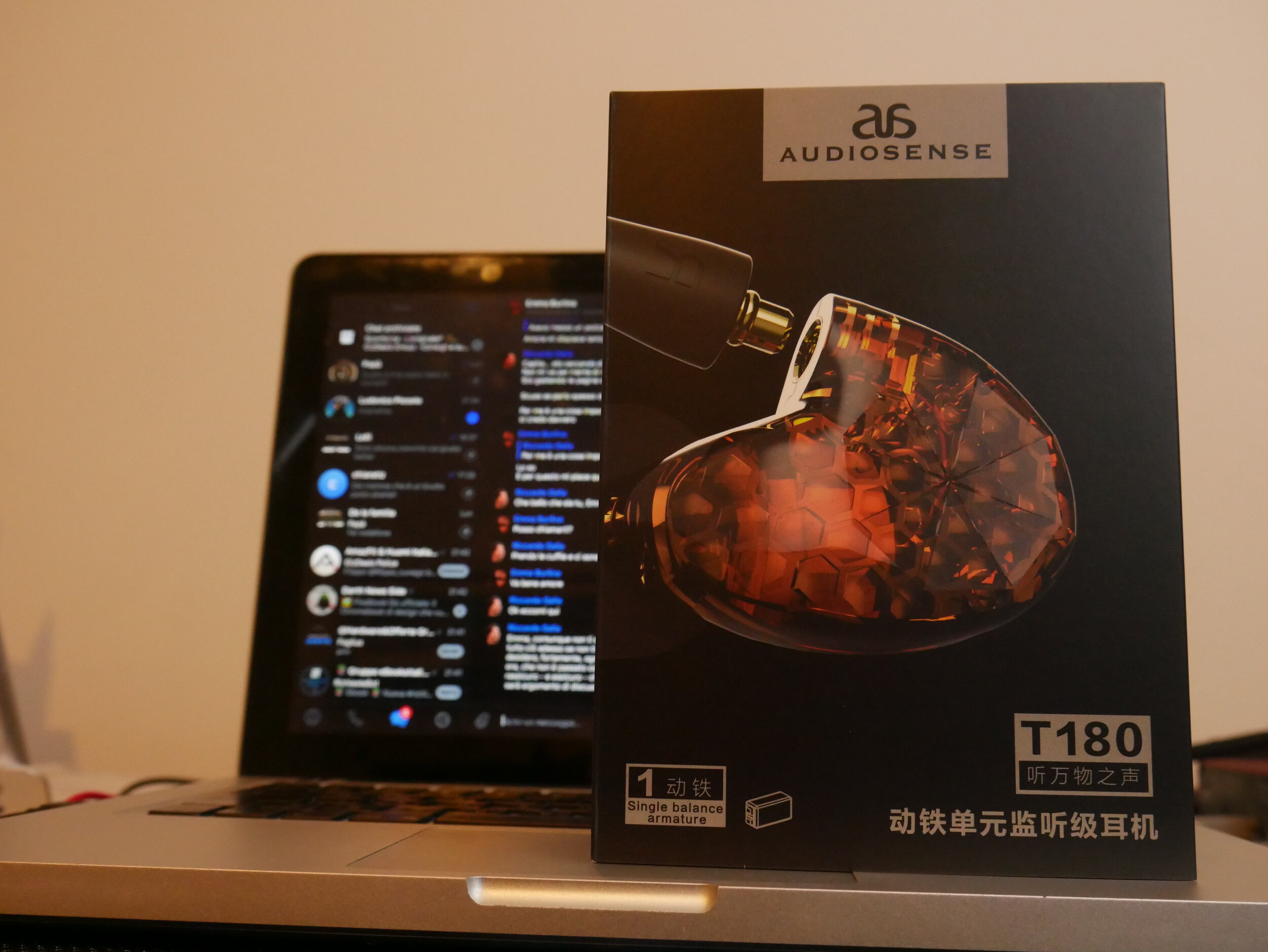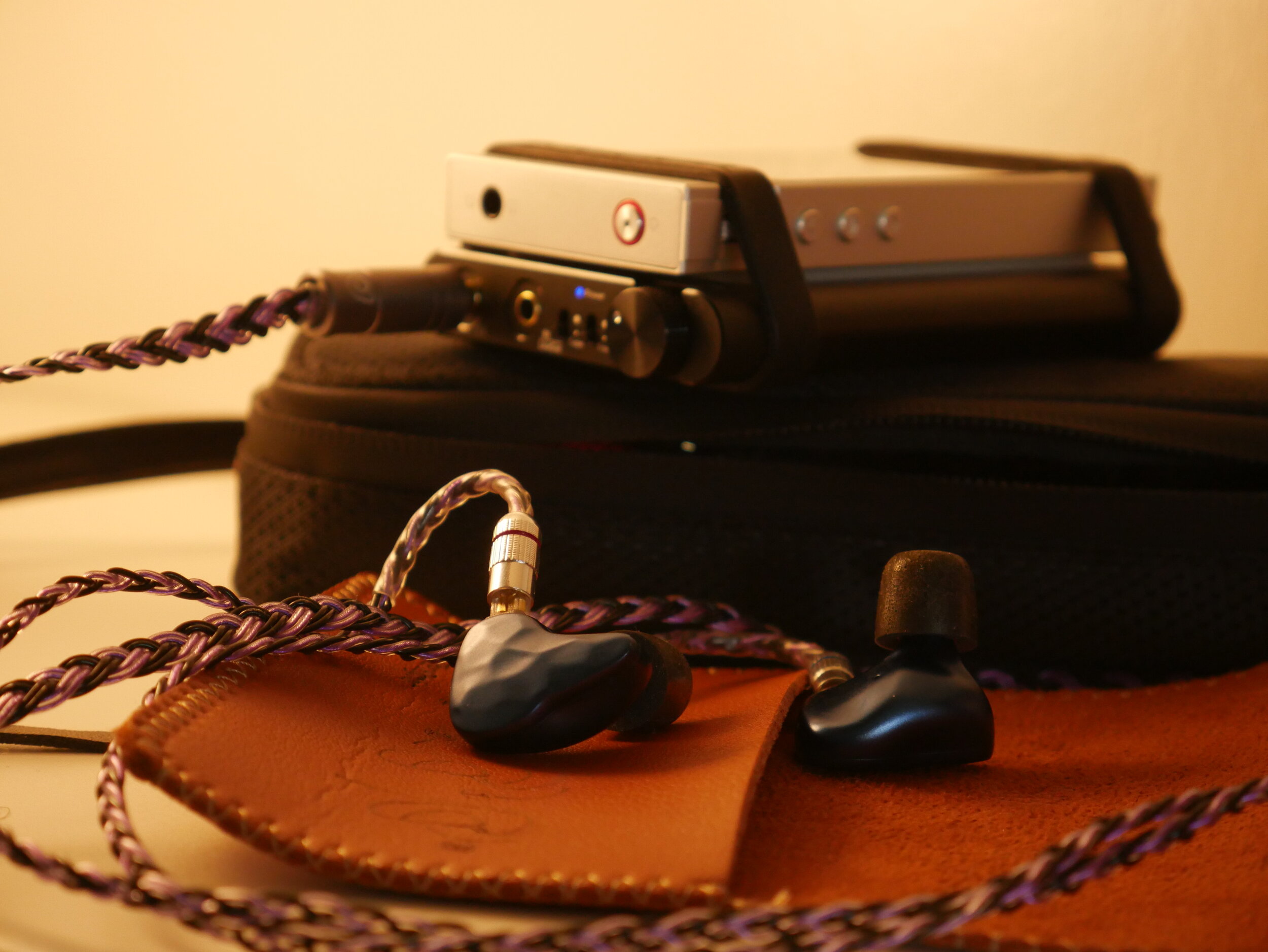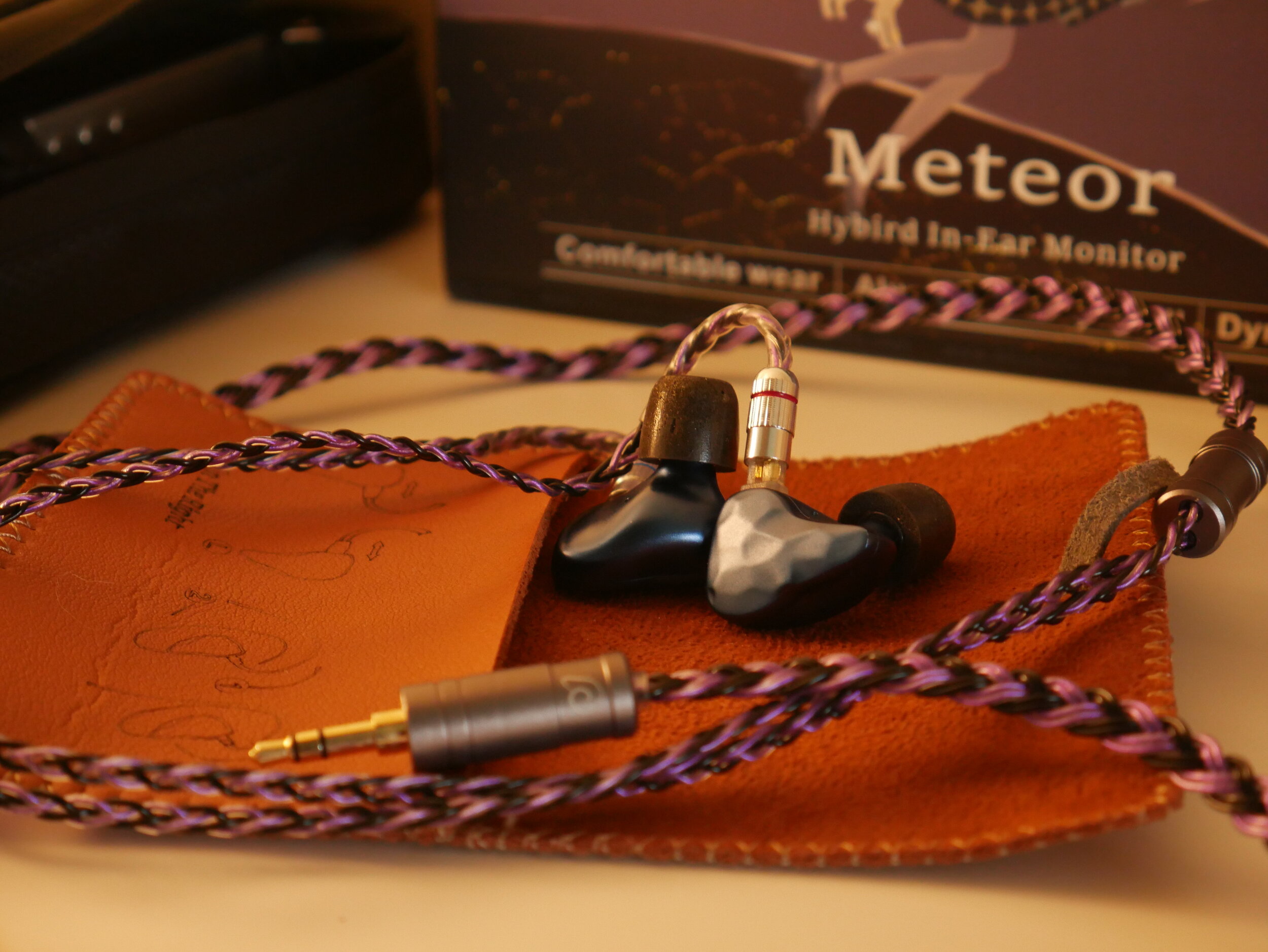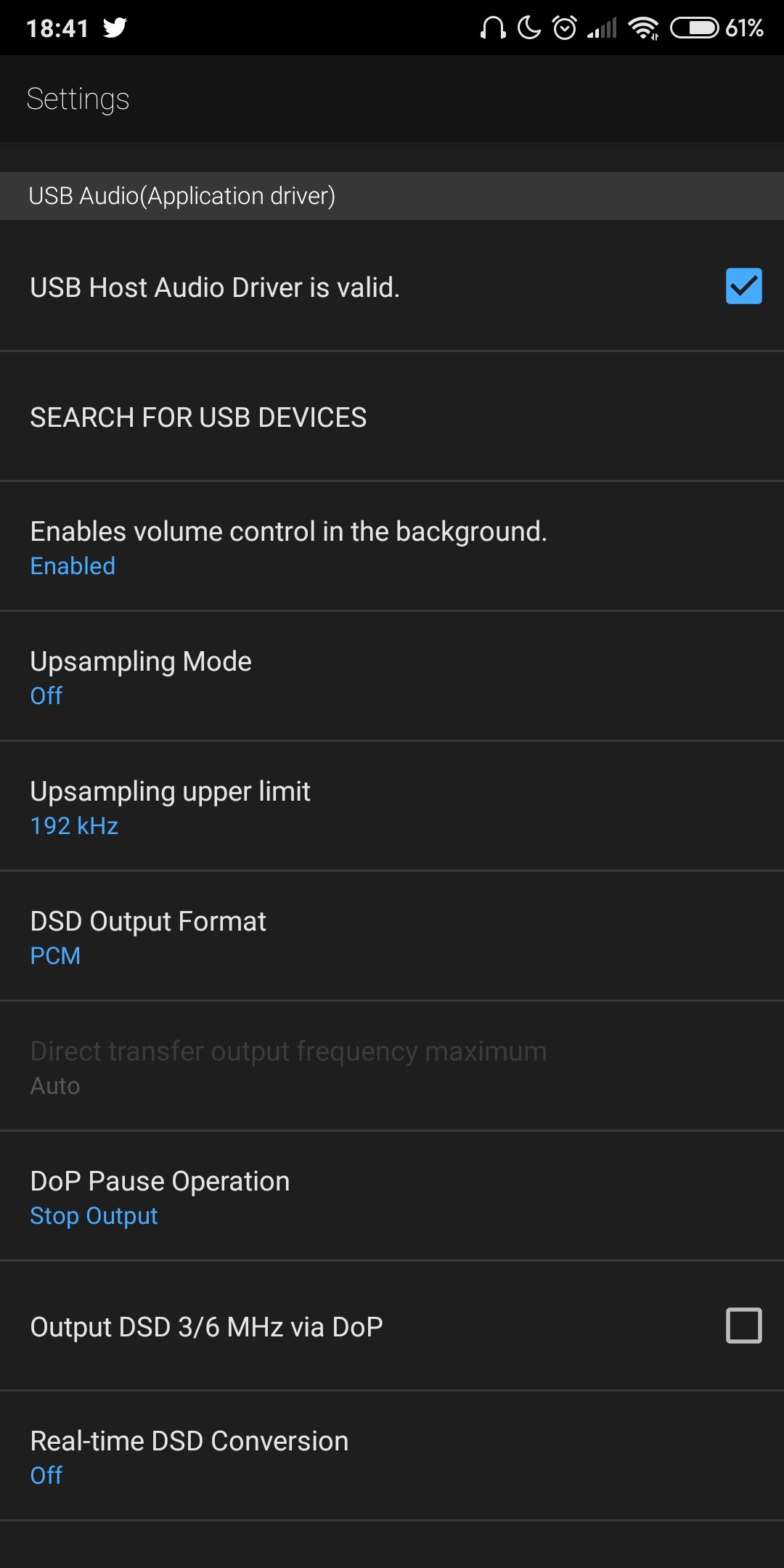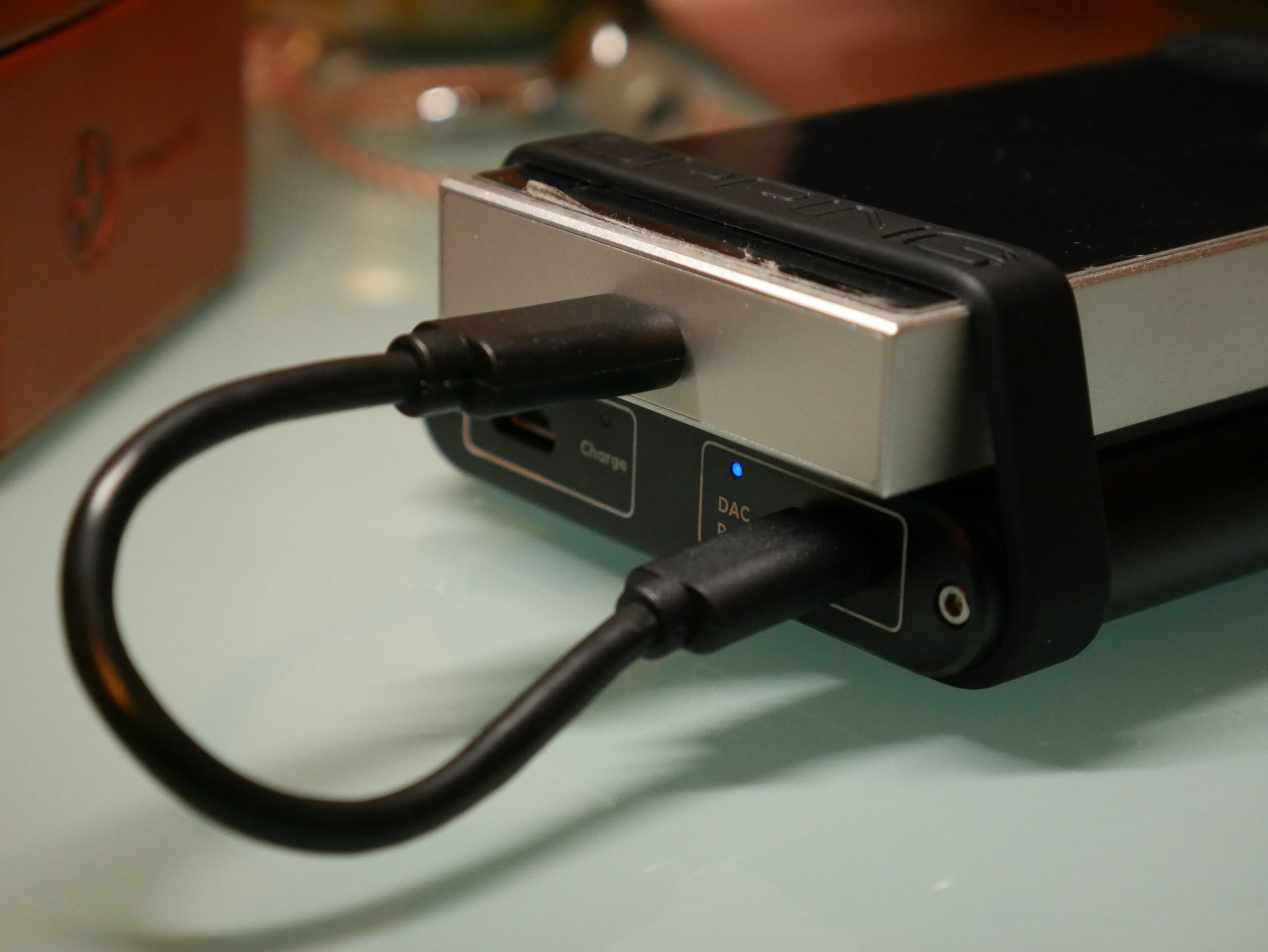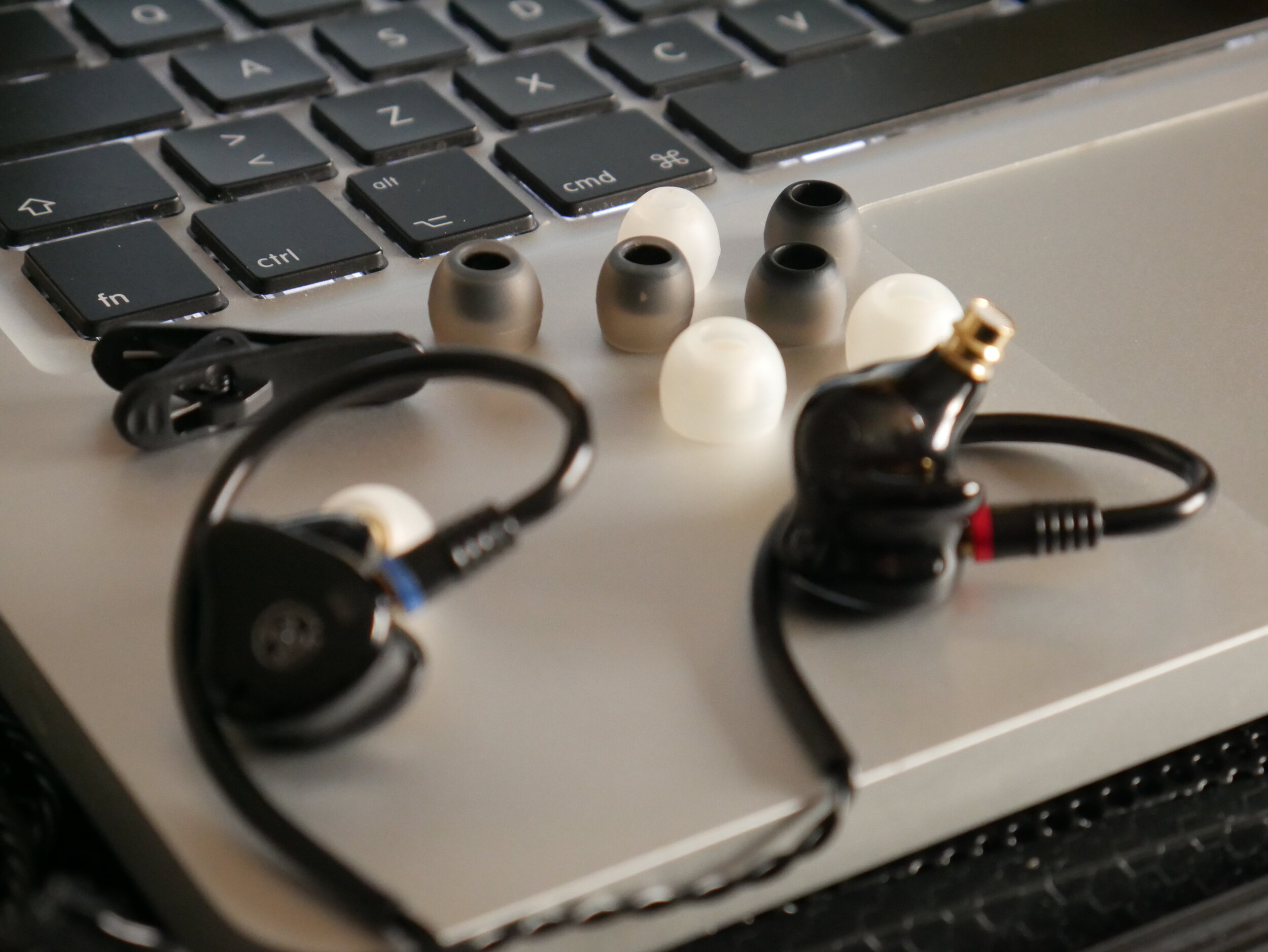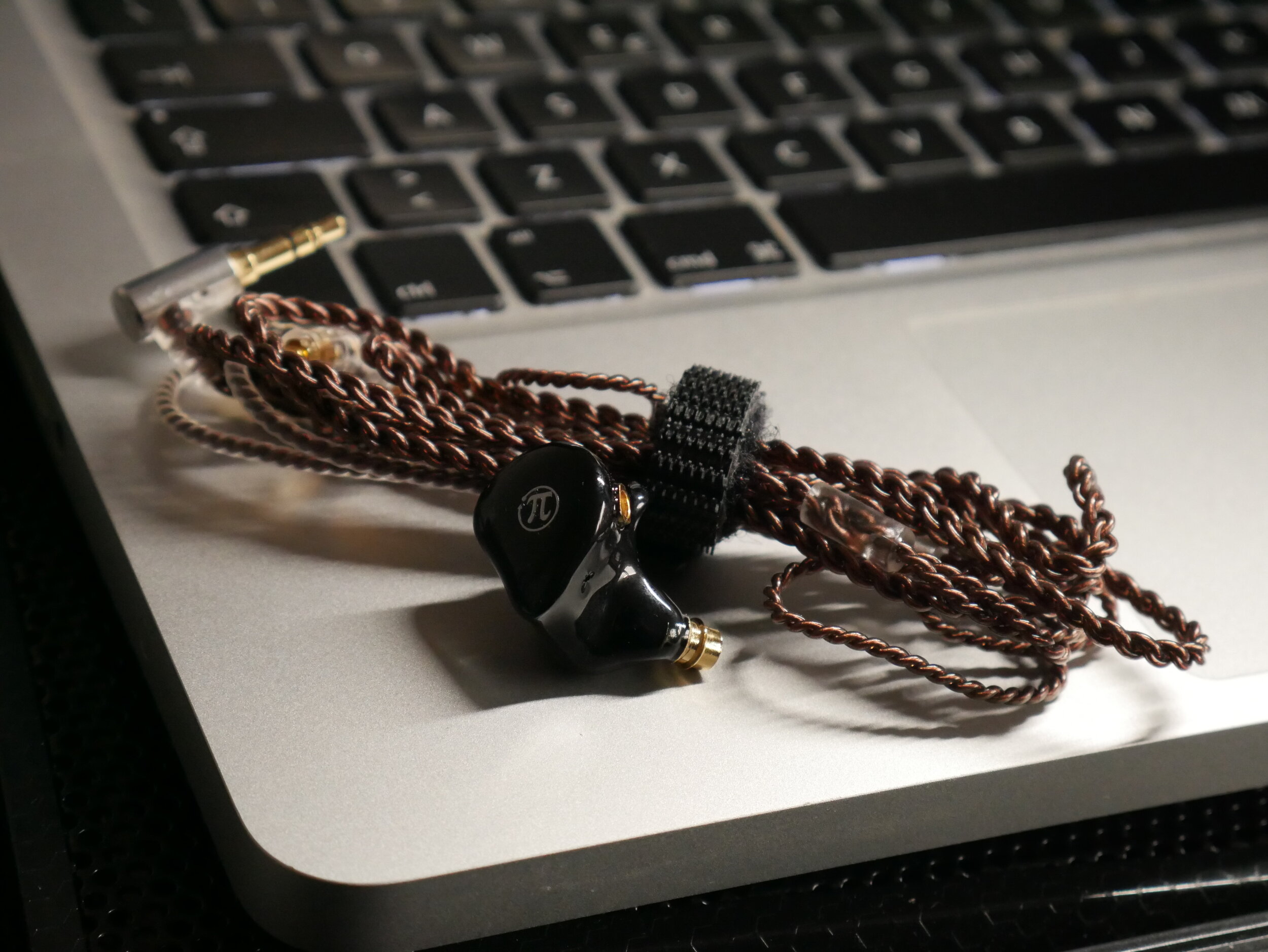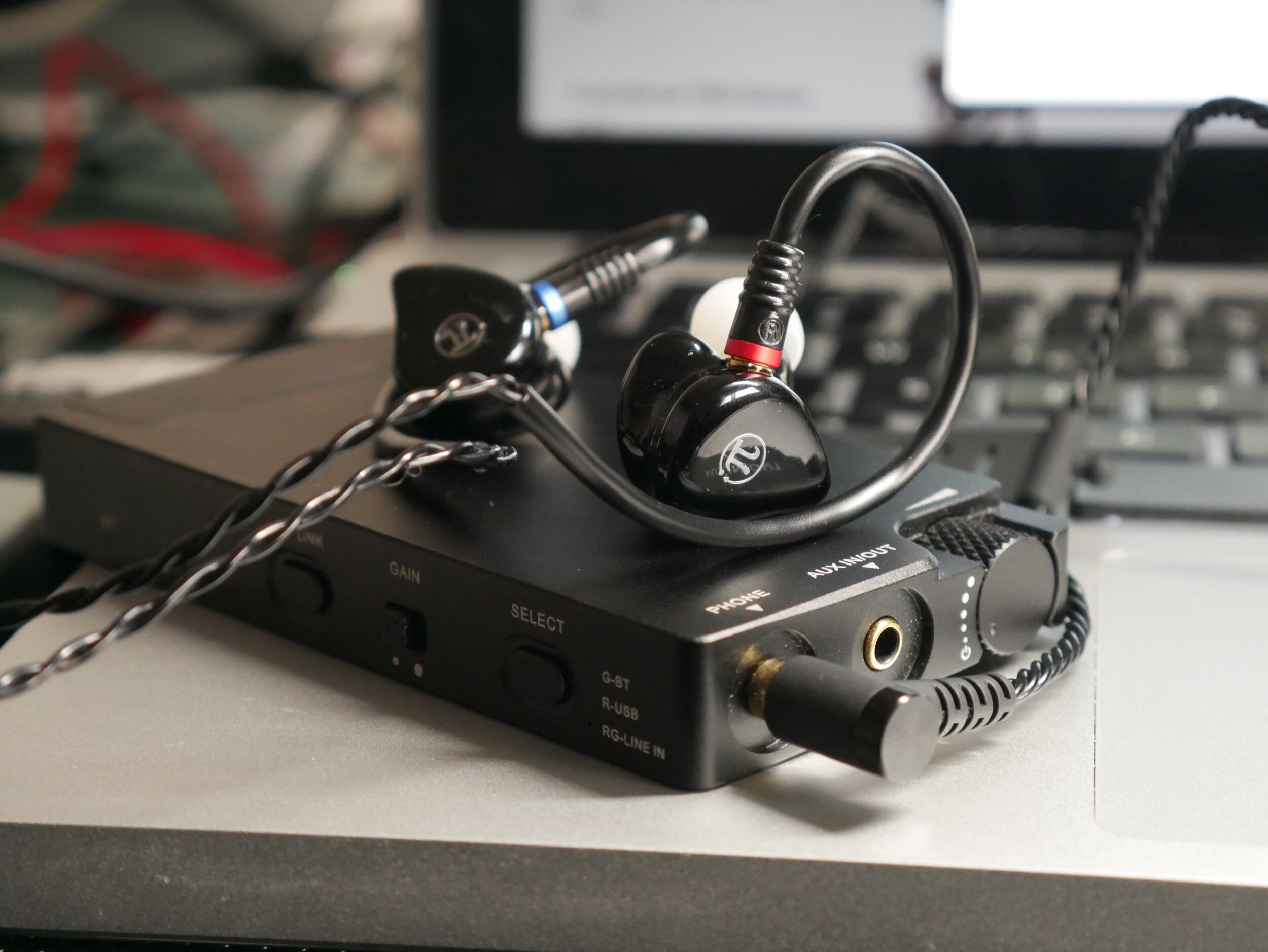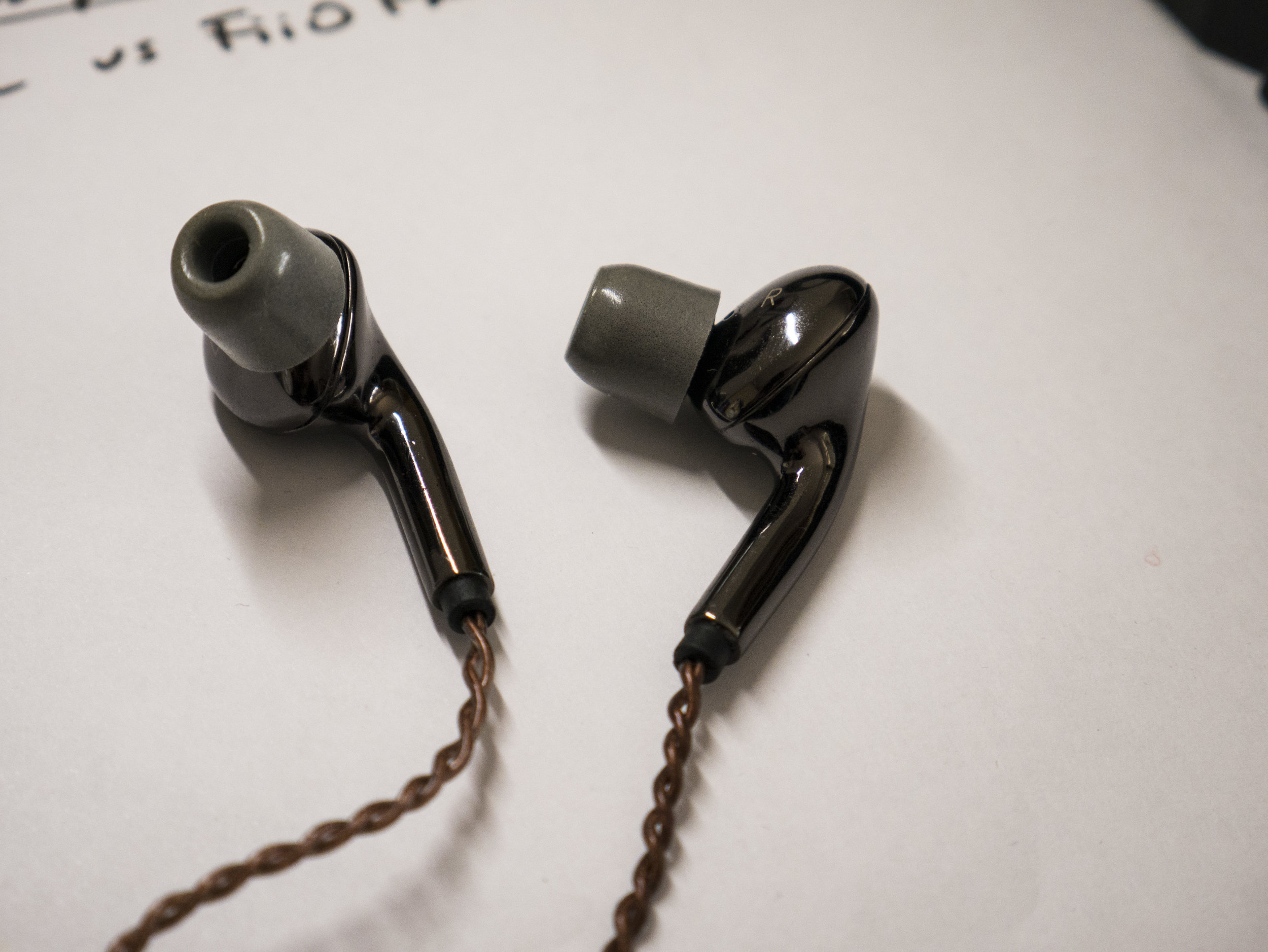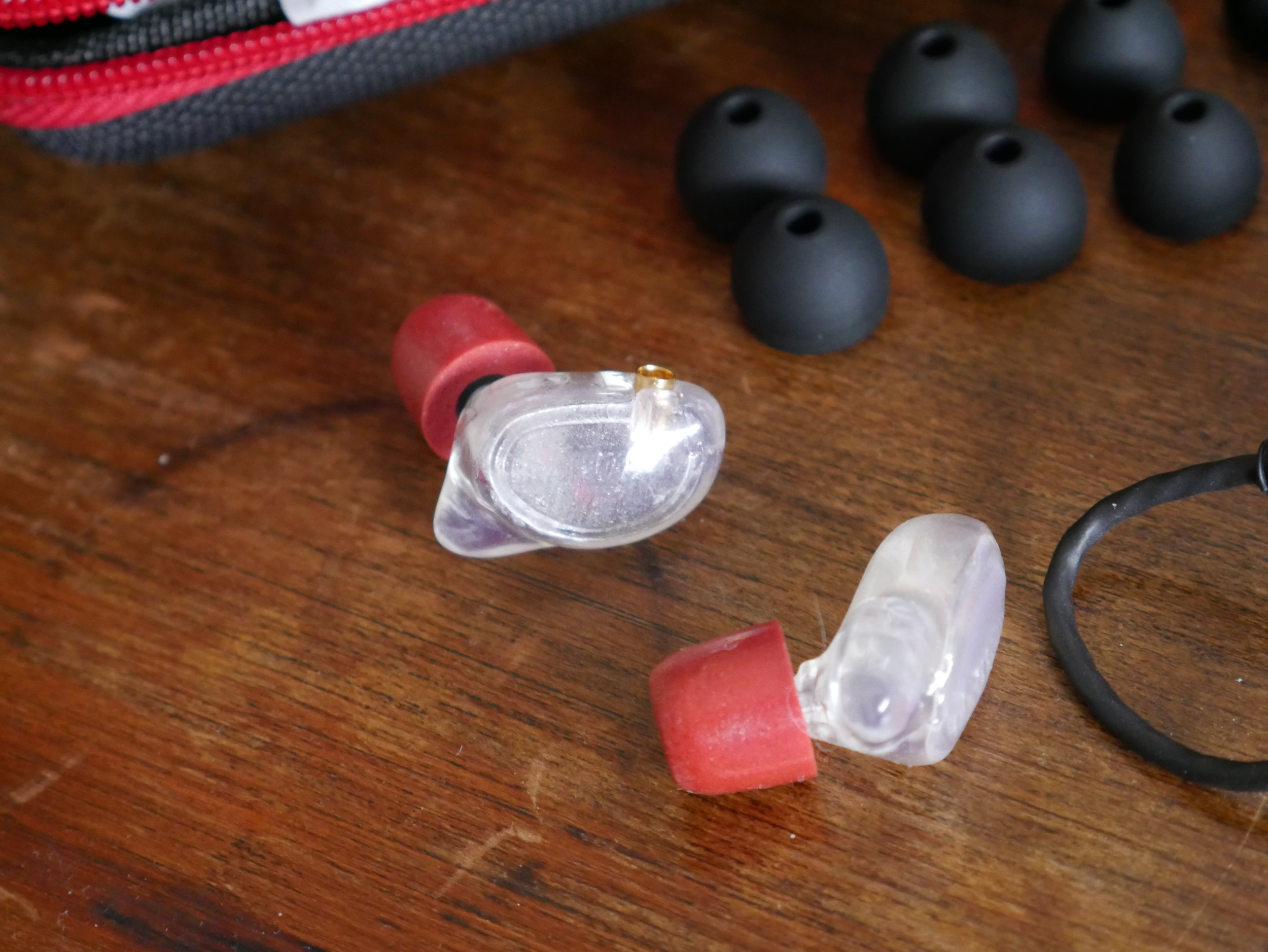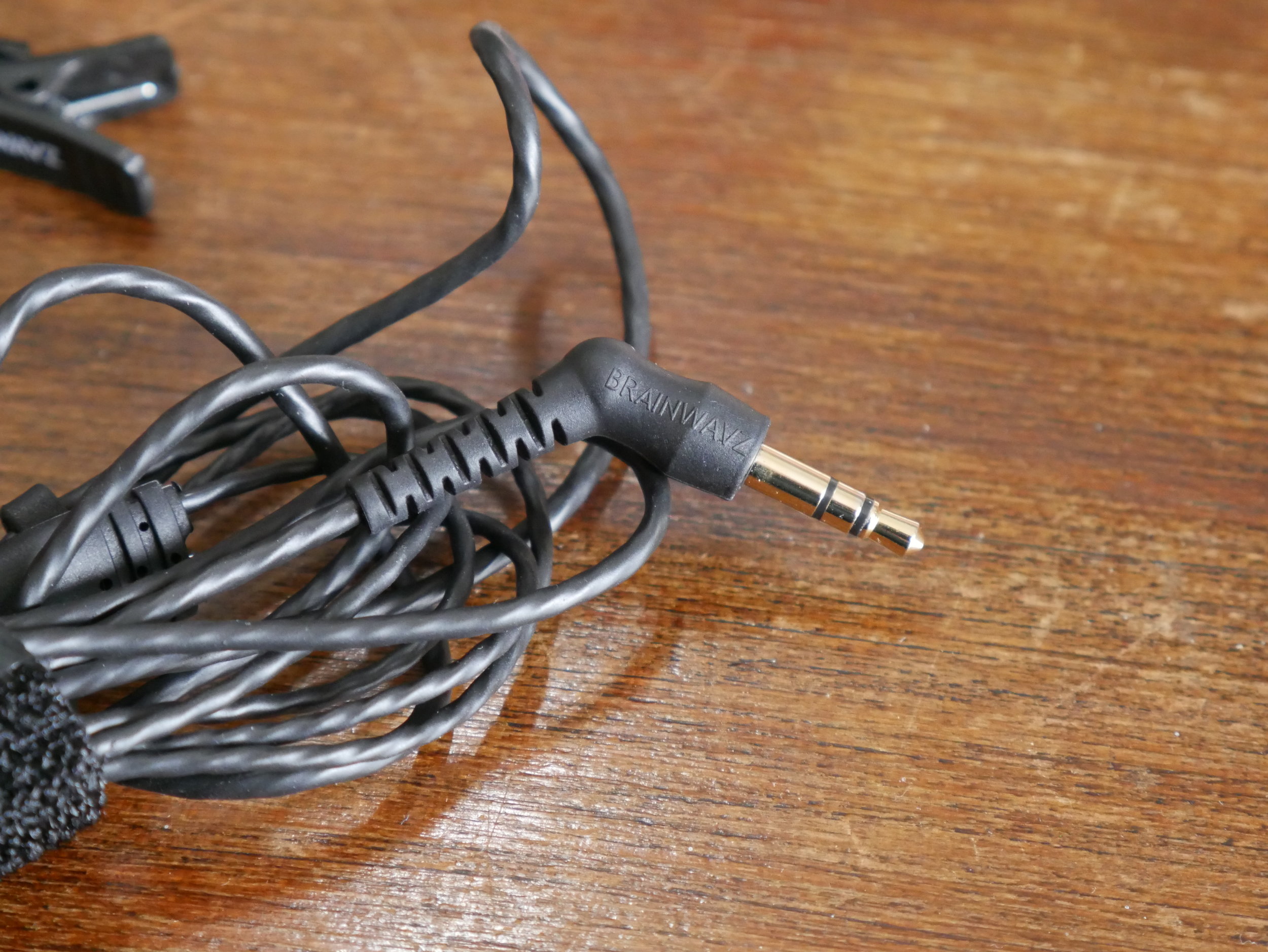Price: 40$
Where to buy: https://aliexpi.com/wigv
Specifications:
Impedance: 24 Ohms
Sensitivity: 100 dB/mW
Frequency response: 20-20k Hz
Noise reduction: 30 dB
Driver: Knowles RAF-32873 (1 per side)
Many thanks to AudioSense for providing this review sample.
Unboxing and first impressions
My first AudioSense product was their TOTL: the 8 balanced armatures T800 (review here). That unboxing experience was overkill, but this one is nothing less impressive. In fact, for the ridiculous price of 40$ you get a really nice packaging: a carrying case hosts the cable – I got both the 16 core upgrade cables from them so I don’t have the stock one you get if you buy them alone; however, my T800 come from the first batch with that same cable, so I have one anyway -, and the ear tips. Two of them are already on the nozzle of the IEMs, which are placed on a hard foam. One of these tips was broken when I took it out. I got no foam tips, while the retail package should have a pair – remember mine is a review sample, so it may vary. The shape of the buds is identical to the ADVANCED Model 3, which I don’t know how different it may be from the Shure SE215. That shape is wonderful: the fit you can get is amazing even with small ears, and the isolation with the right tips becomes unbelievable. I have a pair of red Comply foam tips which are perfect even for a color match with the T180, and provide an unmatched seal. And I can even sleep wearing them, because they don’t protrude at all from the ears. A Knowles BA is all you get inside the shell: a strange choice, because it’s difficult to get a decent sound with this driver configuration. Brainwavz KOEL – which I reviewed well – actually never reached my ears again after the review (apart from the time I understood they were defective). The FiiO FA1 are fair but nothing more, and their shell is senselessly big. Well, we’ll talk about some comparisons after the sound impressions. A little excursus about the drivers: a pair of RAF-32873 by Knowles costs alone 11$. That means that you pay 30$ for the shell, the cable, the tips, the case and the packaging. I believe they have a paltry gain by selling these IEMs. Because they even sound good. I used them with their copper upgrade cable (non-affiliate link: https://aliexpi.com/6pxT).
Sound
My sources: FiiO M7 (standalone; to XDUOO XP-2 via Bluetooth; to XP-2 via line-out; to TOPPING NX4 via line-out), Dodocool DA106 (mainly to XDUOO XP-2 via line-out); Mi MIX 2 to XP-2 (via Bluetooth and USB) and NX4 (USB), to Zorloo ZuperDAC-S, to Audirect Whistle; MacBook Pro 2012 to Focusrite 2i2.
My music: Jon Hopkins, “Singularity”; Billie Eilish, “When do we fall asleep, where do we go?”; Coldplay, “Ghost stories”; Bon Iver (Discography); Jack Garratt, “Phase”; Jamie Cullum, “Taller”; Sia, “Colour the small one”; The Bloody Beetroots & Jet, “The great electronic swindle”; Jacob Collier, “In my room” and “Djesse (Vol.1)”; John Coltrane, “Giant steps”; Lauv, “I met you when I was 18”, Oh Wonder (Discography), Radiohead (Discography), a lot of Mozart, ecc..
My files: MP3, M4A, FLAC, ALAC, few DSDs (Pink Floyd).
I didn’t love the T180, at first. I’m a supporter of flat tuned earphones, I love the ADVANCED M4 for ever. However, the T180 were kind of disappointing because of their lack of life. A single balanced armature is not as capable as a single dynamic driver, I’m pretty sure about that after trying some single BAs. These clearly are flat IEMs, as neutral as possible, and now I learned how to appreciate them. They are not really extended in the sub-bass nor in the treble region; the spectrum they cover, however, is really well reproduced: I hear no emphasis anywhere. That’s the reason I miss some vividness, but that’s also why those are perfect for music production. They may be considered something similar to the Yamaha NS10, not because they sound horrible but due to their limited frequency response. Bass is mainly focused on the mid side, with a fair presence, considered the driver configuration. You can’t expect too much, though. These are monitors for stage use on a budget and neutrality lovers – also on a budget – and a fat bass is not a prerogative for none of them. Midrange is okay, a bit thin for my taste, but fairly well separated and surprisingly clear and airy for a single BA. Vocals sound nice, even if I get a timbre which is kind of artificial – but that’s an aspect of BA earphones which regards even thousands of dollars products. Treble is as enjoyable as the rest: not picky nor rolled off, but neither extremely extended. It is detailed and clear, on a brighter side. Soundstage is average in width, and not very deep. Imaging is precise, so in the end you get a pretty decent tool to monitor. I honestly don’t believe this set is the best choice if you want to enjoy your music as a listener, but as a creator you may find it really accurate and perfect even as a primary tool. Not to mention how convenient it is for isolating you from external noises: the low-key fit and the passive noise cancelling you can achieve with the T180 make them perfect for sleeping – though I wouldn’t recommend sleeping with a cord near your neck.
Comparisons (kind of)
Now this is the time to say an important thing. I did try 4 sets of single balanced armature earphones, as I’ve previously said: these T180 by AudioSense, the KBEAR F1, the BRAINWAVZ KOEL and the FiiO FA1. The KOEL are bad. Even if I released a good review, I will change it because I have totally mistaken in their judgement. The F1 have QC issues and even though they are a nice product overall, they don’t feel solid enough to recommend them. The FA1 are salvageable (really well built and with a lot of accessories), but too big for that kind of driver configuration. The T180 in the end are the best set of this kind that I’ve tried, for fit and sound quality. Also, they are very cheap. I like them, even though I don’t find myself using them so much – it’s true that I have dozens of IEMs, but some are on my ears more often than others.
Conclusions
I’ve been critical about this set, because I read a lot of reviews praising this product as amazing. It is a good product and it has very few cons, it’s true. And all things considered, it is a solid product, with the only real disadvantage of being limited in sub-bass and higher treble because of its driver configuration. Mounting a single BA is usually not a wise choice. But they nailed it. As a music creator, I can recommend them without too much hesitation. So far, AudioSense has been an incredible brand.


